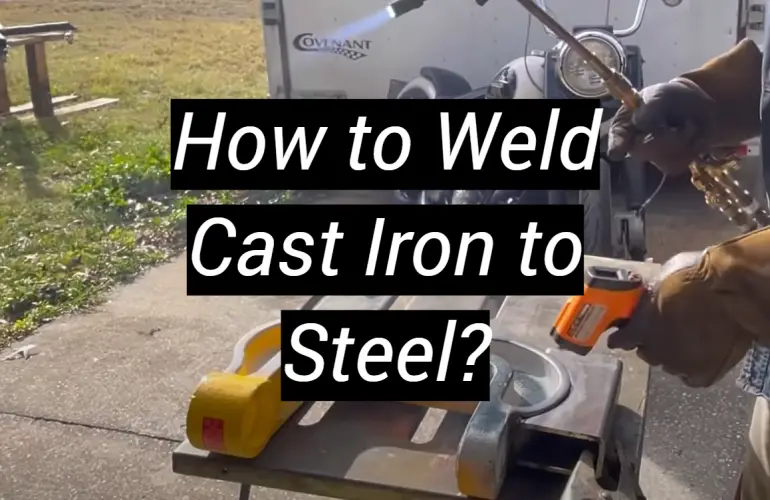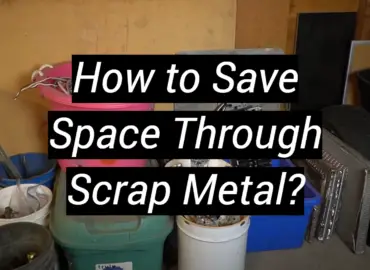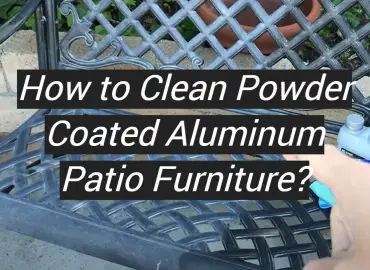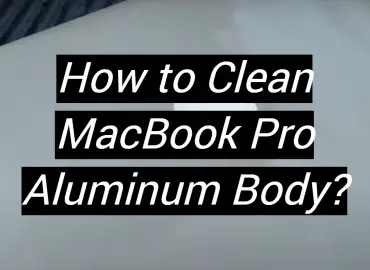If you are a beginner at welding, this is the blog post for you! We will teach you how to weld cast iron and steel together. It might seem hard, but we will show you how to do it step-by-step.
Whether it’s for repairs or building something completely new – our tips will get you one step closer towards making accurate and strong welds. So read on and put that knowledge about welding into practice!
What Makes Both Cast Iron and Steel Metals Unique?
Before you learn how to weld them together, it’s important to understand the difference between cast iron and steel. Cast iron is a brittle metal made up of an alloy of carbon and iron.
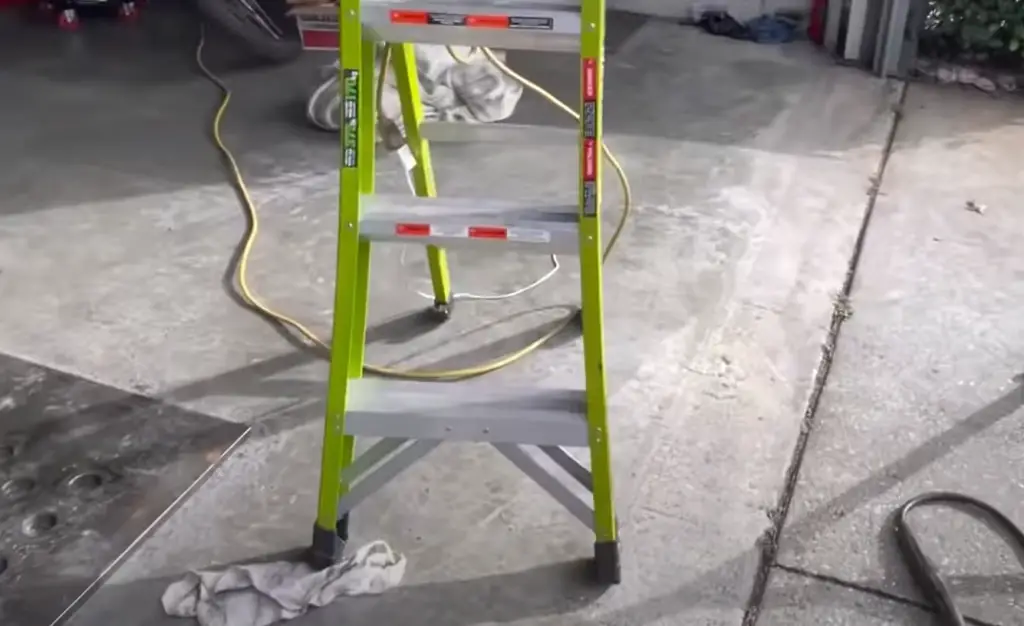
It is heavier than steel and generally easier to shape – however, any weld bead that has contact with the base metal will be prone to cracking when cooled.
Steel is also an alloy of iron, but with a much higher carbon content – making it significantly stronger than cast iron. The weld beads on steel will not crack when cooled and are generally easier to work with.
Tools Needed
To successfully weld cast iron and steel together, you’ll need the following tools:
- A welder
- A grinder
- Protective welding gear
- Welding rods
Your local hardware store likely has these tools, so if you don’t have them already – stock up!
Carbon Content
When welding cast iron and steel together, you have to think about the carbon content. This will affect how good your welds are. If the carbon content of your welding rods is too low, your welds could be weak, break easily, or crack over time.
A good rule is to make sure that the carbon content of the welding rods is higher than that of the base metals. [1]
Different Volume Changes When Exposed to High Temperatures
Because cast iron and steel have different carbon content levels, they also react differently to high temperatures. When you weld one to the other, the base metal with the higher carbon content will expand more than the other.
Melting Points
If the melting points of your metals are too different, you won’t be able to weld them together. The melting point of cast iron is between 1200-1600 degrees Celsius.
The melting point for steel is 1400-1550 degrees Celsius. This means you’ll need a welding rod that has a higher melting point than either of these metals.
Impurities
To weld metal together well, it is important to clean the surfaces of the metals first. This means getting rid of things like grease, dirt, or rust.
You can use a machine called a grinder to do this before welding. If you do this, your welds will be stronger and have fewer problems.[1]
How to Weld Cast Iron to Steel?
Identify the Materials for the Job
This includes the base metal (cast iron or steel), any filler material, and the welding rod.
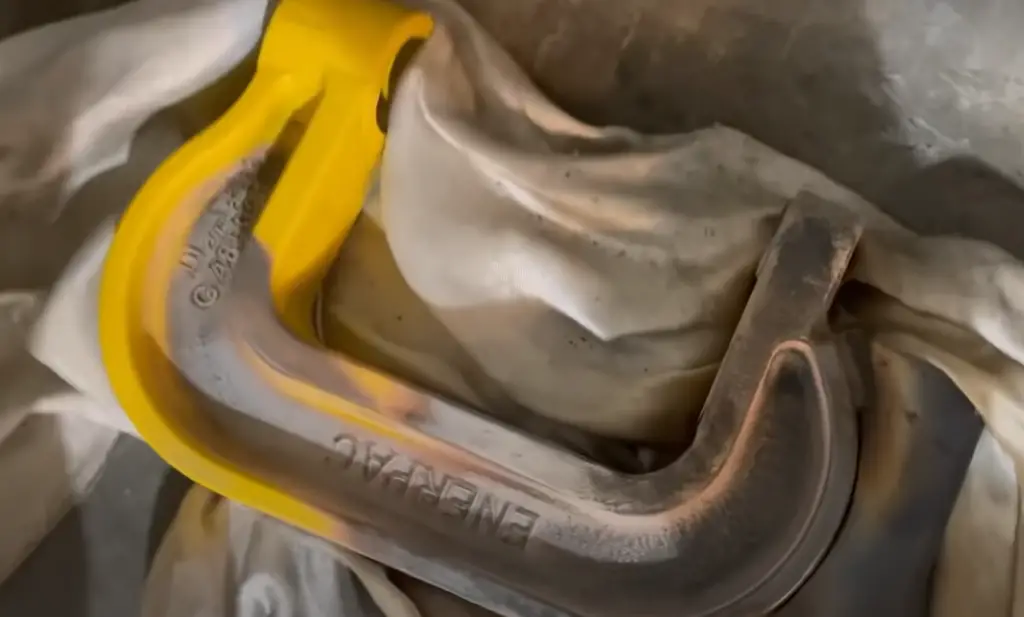
Make sure that all of these are compatible with each other so that your welds turn out strong and accurate.
Clean the Metals
To clean the surface of both metals, use a grinder. This will help make sure there are no impurities that could interfere with the welding process and make your welds weaker.
Preheat the Joint
Using an oxy-fuel torch or a welding machine, preheat the joint evenly. This will help make sure that neither metal expands too much during the cooling process.
Weld the Small Beads Scattered Over the Joint
Using the correct welding machine settings and rods, start welding the joint by making small beads scattered over the area. This will help make sure that your welds are strong and durable.
Peen Each Bead
After you finish each bead, use a hammer or chisel to flatten the weld. This will help make sure that the welds are even and strong, and it will also remove any air pockets in the metal.
Ensure They Are Well Protected
Be sure to wear protective gear when welding. This will help protect your eyes and skin from the heat, sparks, and other debris that is created during the process.
Methods of Welding Cast Iron to Steel?
TIG Welding
TIG welding is a way of joining metals together using an electric torch. It can be used for both cast iron and steel, which makes it perfect for this application.
MIG Welding
MIG welding, or metal inert gas welding, is also an option. It uses a wire feeder to join metals together and can be used with both cast iron and steel.
Oxy-Acetylene Welding
Oxy-acetylene welding requires the use of a torch that burns both oxygen and acetylene gas.
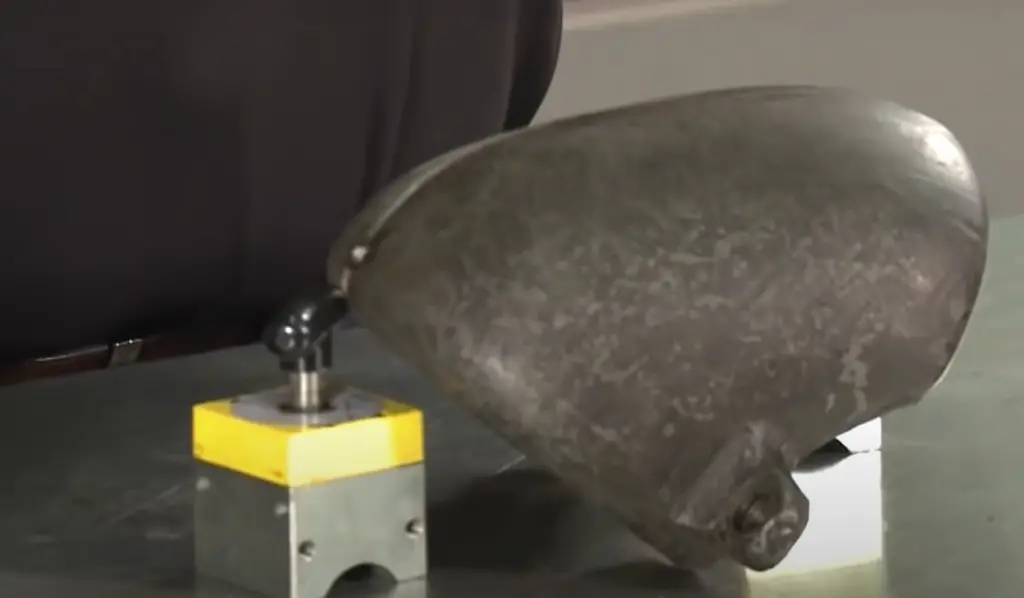
This is great for joining cast iron and steel together, but it requires more experience and skill than other types of welding.
What’s the Difference Between Cast Iron and Steel?
The main difference between cast iron and steel is the amount of carbon in them.
Steel has less carbon, so it can be bent more without breaking.They both have good and bad parts for welding projects. Knowing the differences helps you choose the right metal for the job.
It is also important to note that welding cast iron and steel requires different techniques, rods, and tools than welding other metals.
It is essential that you understand the differences between these two materials before attempting a welding project involving them. [2]
FAQ
Can you weld steel onto cast iron?
Yes, you can weld steel onto cast iron. It is important to use the correct welding rod and machine settings for this process.
How do you join two pieces of cast iron?
You can join two pieces of cast iron together by using any one of a number of welding techniques, such as oxy-acetylene or TIG welding. Make sure that you use the correct rods and settings for the job.
Is welding cast iron difficult?
Welding cast iron can be difficult because it has a lot of carbon and it breaks easily. You need to know the difference between cast iron and steel before you try welding them.
If you are an experienced welder, you should be able to weld cast iron, but it is still a good idea to practise on extra pieces before trying something more complicated.
What rod do I use to weld cast iron to steel?
When welding cast iron to steel, the best type of rod to use is a low-hydrogen rod. This will help stop the weld from breaking and make it stronger. Check your welding machine’s settings to make sure the welds are strong and accurate.
Welding cast iron to steel can be difficult, but it is possible to do with the right information and tools. You need to use the correct welding rod, preheat the joint evenly, make small beads over the area, peen each weld, and protect yourself from heat and debris. These steps will help you create strong welds that will last.
Which welding is best for cast iron?
The best welding process for cast iron is TIG welding. It can be used with both cast iron and steel, which makes it perfect for this application.

You will also need to use a low-hydrogen rod to ensure that your welds are strong and accurate. Finally, make sure you preheat the joint evenly before starting the welding process.
Can I use a 6013 welding rod for cast iron?
No, you should not use a 6013 welding rod for cast iron. This type of rod is designed for mild steel and will not work with cast iron. Instead, you should use a low-hydrogen rod to ensure that your welds are strong and accurate.
Which cast iron can not be welded?
Grey cast iron is the hardest type of cast iron to weld. This is because it has a lot of carbon in it, which makes it more likely to break. You should only weld grey cast iron if you are an experienced welder with the right tools and materials for the job.
What is the melting point of cast iron?
The melting point of cast iron is approximately 2,500°F (1,371°C). This is significantly higher than the melting points of other metals, so you should take extra care when welding it.
Make sure to use the correct rods and settings for your machine to ensure that your welds are strong and accurate.
How do I clean cast iron before welding?
Before welding cast iron, you should make sure that the area is clean and free of any dirt or debris.
Use a wire brush to remove any rust or corrosion, and then use a degreaser to get rid of any oil or grease. Finally, use compressed air to blow away any remaining particles.
How do I protect myself while welding cast iron?
You should always wear a helmet, gloves, long sleeves, and pants when welding cast iron. This will protect you from the heat and debris that can be produced during the process.
Additionally, make sure to use adequate ventilation in your work area to avoid inhaling fumes.
Why is preheating important when welding cast iron to steel?
Preheating is an important step when welding cast iron to steel. It helps stop the metal from warping or cracking. Make sure you preheat the joint evenly before beginning to weld. This will help create stronger welds and prevent uneven heat distribution.
How do I peen a weld on cast iron?
Peen welding is an important step when welding cast iron because it helps relieve stress in the welded joint. To start, remove any slag that may be present with a chipping hammer and wire brush.
Then, use a peening hammer to lightly tap the weld in a criss-cross pattern. This will help make the weld stronger and last longer.
How do I know if my welds on cast iron are strong?
Your welding machine should have an amperage and voltage setting that will help you determine the strength of your welds.
Make sure to check these settings when beginning the welding process, as this will help ensure your welds are strong and accurate. Additionally, peening the weld afterwards can help make the weld even stronger.
Does welding cast iron create sparks?
Yes, when you weld cast iron it can create sparks. To avoid this, you need to wear the right safety gear and use a weld shield. This will help protect you and other people.
You should also use compressed air to clean off any debris or dirt before you start welding. Doing this will help reduce the risk of sparks.
Do I need to wear special safety gear for welding cast iron?
Yes, you should always wear long sleeves, pants, gloves, and a helmet when welding cast iron. This will help protect you from the heat and debris that can be produced during the welding process.
Additionally, make sure to use adequate ventilation in your work area to avoid inhaling fumes. Following safety protocols is essential when welding cast iron to ensure a successful weld.
Can I weld cast iron outdoors?
Yes, you can weld cast iron outdoors. However, you should make sure that the area is well ventilated and free of any debris or dirt. Additionally, use a welding shield to protect you from sparks that may be produced during the process. Following these safety protocols will help ensure that your welds are strong and successful.
Is welding cast iron difficult?
Welding cast iron can be a challenging process, but it is possible to do successfully with the right preparation and safety measures in place.
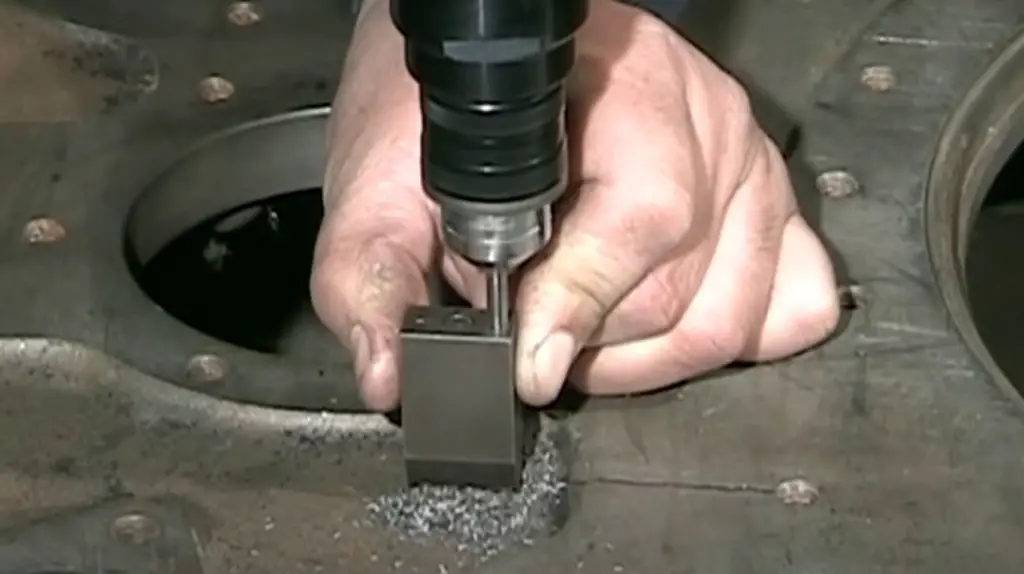
Make sure you follow the necessary steps such as preheating, peening the welds, and using adequate protection when welding.
Are there any other tips for welding cast iron?
- Make sure to use proper equipment such as a welder, goggles, and gloves.
- Use compressed air to clean off any dirt or debris before you begin welding.
- Preheat the joint evenly before beginning to weld.
- Use a peening hammer to lightly tap the weld in a criss-cross pattern.
- Check your amperage and voltage settings to ensure strong welds.
- Wear long sleeves, pants, gloves, and a helmet when welding.
- Make sure the area is well ventilated while welding.
- Use a welding shield to protect you from sparks.
- Follow safety protocols to ensure your welds are successful and strong.
- Consider getting professional help if needed.
Which welding process is best for cast iron?
The best welding process for cast iron is TIG (Tungsten Inert Gas) welding. This type of welding offers precise control over the weld, which ensures a strong and accurate joint.
Additionally, it produces less heat than other processes, so there’s less chance of damaging the material. However, it can be a challenging process to master and may require professional help.
Does welding cast iron require special rods?
Yes, welding cast iron typically requires the use of low-hydrogen electrodes, such as E7018 rods. These rods contain a higher manganese and silicon content that helps reduce cracking in the welds.
Additionally, they have a lower hydrogen content that prevents porosity and provides a stronger weld. It is important to use the correct rods for each welding job in order to ensure a successful and strong weld.
How do I weld cast iron to steel?
You can weld cast iron to steel using the TIG welding process.
- First, clean both surfaces of any dirt or debris.
- Second, preheat the joint evenly before beginning to weld.
- Once you’re ready to begin welding, tap the weld in a criss-cross pattern with a peening hammer.
- Finally, check your amperage and voltage settings for strong welds.
Follow all safety procedures while welding and consider getting professional help if needed.
Useful Video: How to Weld Cast Iron to Mild Steel! | It CAN Be Done!!!|
Conclusion
Cast iron and steel are two different metals that are frequently worked with in the welding process. Though they have some similarities, there are also significant differences between the two.
When welding cast iron to steel, it is important to take these into account in order to avoid any problems.
By following the proper steps and taking care to weld correctly, you can ensure a successful join between these two metals.
References:
- https://waterwelders.com/can-you-weld-cast-iron-to-steel/
- https://www.weldpundit.com/weld-cast-iron-to-steel/

